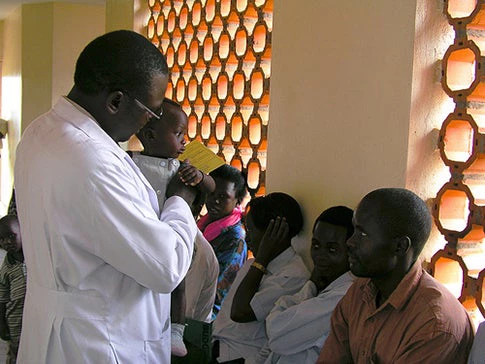The global health community is abuzz about the results of the latest Global Burden of Disease Study (GBD 2010) launched earlier this month. While experts will continue to debate the methodologies used to derive estimates of disease and mortality for 187 countries, and to assess 67 risk factors, the study’s conclusions still carry important messages for the World Bank’s work in health.
The GBD 2010 enunciates trends anyone working health in developing countries has witnessed: since the first estimates undertaken by the World Bank 20 years ago, there has been a real shift in the burden of disease. While Africa and parts of Asia still suffer substantially from the communicable diseases that have held the global public health community’s attention for decades, even the poorest in these regions are experiencing a growing burden of non-communicable disease. Critically, a large share of risk factors, together with the most cost-effective interventions for addressing these diseases (e.g., taxes on tobacco or alcohol, road safety programs), lie outside of the health system.
For the World Bank’s health team, this means we need to place a greater emphasis on intervening beyond health systems to affect health outcomes. Changing demographics and epidemiology, combined with growing knowledge about risk factors, should result in a shift in dialogue with developing countries, and an expansion of the analytical work we undertake.
The Bank should build upon these results to support country governments in better understanding the impact of these transitions on their efforts to reduce poverty. In addition to reducing deaths among children and pregnant women and reducing malnutrition, countries need to be able to continually identify and respond to their leading public health concerns, not only those that result in premature mortality (which the GBD 2010 points out is no longer mainly due to communicable diseases such as AIDS, malaria and tuberculosis), but also those that increase costs (to governments, households and employers) and undermine productivity.
For poor households, disability in a wage earner can be devastating, and chronic care both difficult to access and impoverishing. In South Asia, we see firsthand that diabetes and hypertension are not exclusively diseases of middle and upper income countries or households, and that pedestrians, not the wealthier car owners, are more often the victims of road traffic accidents.
So, what next? The GBD 2010 pushes the global health community to build more evidence around risk factors and cost-effective interventions, particularly those interventions that can be both afforded and implemented in low-income settings. India has the largest number of diabetics in the world, and it is encountering the disease transition at a relative level of income that will demand more affordable responses. If well-captured and robustly monitored and assessed, its strategy and lessons should inform other countries.
Many of these cost-effective interventions will not be delivered by ministries of health, but by other government agencies, such as those working on agriculture, transport or water/sanitation. Thus, while we need to continue to strengthen health systems and endeavor to achieve universal health coverage to have a sustainable impact, we also need to expand our work beyond health systems. The World Bank is well-positioned to assist countries in understanding what they can and need to do across sectors to have a greater impact on efforts to both improve health outcomes and reduce impoverishment due to illness. This suggests a need for additional skills among our sector specialists and a shift in how we do our work, from focusing primarily on the health sector to addressing all factors that affect health outcomes.
Lastly, the debates over the GBD 2010 estimates will hopefully encourage countries and their development partners to prioritize investments in improving country-level data; if we are not tackling the right things with the right information, poor countries and poor households will waste limited resources. But, we also need to carefully consider the study’s findings to ensure we are incorporating this knowledge to respond to the shifts in the world’s burden of disease.
Related
Global Burden of Diseases, Injuries and Risk Factors Study 2010
Capitalizing on the demographic transition: Tackling non-communicable diseases in South Asia



Join the Conversation